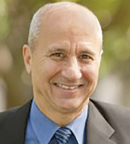Clinicians and researchers in the field of palliative and supportive care are enjoying the recognition the field is now receiving and expecting the future to be ripe with opportunity. But one thought leader in this specialty had a suggestion for attendees at the 2016 Palliative Care in Oncology Symposium: Let’s put the resources we already have to better use.

Institutions have never been more open to supportive care services. Wherever I go, I am overwhelmed by the receptivity we get about using supportive care.— Matthew J. Loscalzo, LCSW
Tweet this quote
“The field of palliative and supportive care is exploding in wonderful ways. We used to have meetings like this in a telephone booth!” Matthew J. Loscalzo, LCSW, quipped, in front of 600 symposium attendees. “But for now, how do we use what we already have? How do we apply our current resources in the clinical setting?” Mr. Loscalzo is the Liliane Elkins Professor in Supportive Care Programs and Executive Director of the Department of Supportive Services at City of Hope, Duarte, California.
He said the underlying reality upon which this work is centered is this: A patient’s illness, happiness, joy, and sadness all occur in context. People come to the hospital so they can get back to their families and lives. Palliative care providers help make this happen, Mr. Loscalzo stressed.
However, there are many challenges. Patients are living longer with more complex outpatient care. Caregivers are seldom prepared to manage the number and complexity of what are truly “medical” problems, now shifted to the patient’s home. The health-care system is increasingly fragmented and often poorly coordinated. Psychosocial and spiritual distress levels among patients and caregivers are high. And meeting these needs is difficult in light of acute shortages in mental health services.
Leveraging Our ‘Resource Inventory’
“Our resource inventory—what already exists—should be leveraged for better health caring,” declared Mr. Loscalzo. Social expectations, guidelines and, more important, standards for “whole-person centered care” (a high bar) are emerging, he continued. These factors are based upon huge datasets, such as the 25,000 consecutive-patient file at his own institution, City of Hope, documenting unmet needs and identifying areas of opportunities. Evidence is demonstrating that supportive care services can improve outcomes. And there are “multidirectional pressure points” for more efficient and less expensive care, especially at the end of life but also for the management of chronic illness in nonelderly populations.
Mr. Loscalzo added: “Institutions have never been more open to supportive care services. Wherever I go, I am overwhelmed by the receptivity we get about using supportive care,” he shared.
“But we have challenges,” he acknowledged. They are best overcome, he said, “when we focus on those segments of the palliative care population most in need…. We in supportive care need to be strategic and focused; we can’t do everything for everyone.” He advised listeners to “go where there are data” to support palliative care involvement. “Go where you are most needed.”
‘Self-Awareness Matters’
To this end, “self-awareness matters,” stated Mr. Loscalzo. Palliative care providers should refine their message according to their particular audience and have “an open mind” about the individuals they are being asked to serve. Although economics has never been the driver for palliative care services, “it’s OK to talk about money,” he added. “You have answers to administrative problems. It’s bigger than just keeping people out of the emergency room or ICU. We can identify specific values, benefits, and outcomes…. As health care shifts away from pay-for-service, we will only become more influential,” he predicted, “but we must get beyond the lexicons and move into action.”
He emphasized the need to identify and integrate existing individuals (ie, resources, who will commit to common goals based on the highest value for patients, caregivers, and colleagues).
Talking With Patients
Mr. Loscalzo encouraged his audience to be bold but sensitive in their conversations with patients, and he used his approach to biopsychosocial distress screening to demonstrate how to enter into “bigger conversations.” At City of Hope, all newly diagnosed patients with breast cancer and their partners participate in a supportive care intervention. Within 90 seconds, the facilitator “must mention death,” he said. The patients and partners are separately asked, “Which statement [on a list of five prognostic possibilities] is closest to your understanding of the present medical situation?”
Patients thank them for bringing up this topic, he noted. “We open that conversation, even with early-diagnosed patients who in all likelihood may be cured,” he said, acknowledging these conversations are not always easy. “We have to recognize that on some level, most of us are chasing immortality, and we don’t like to have these conversations ourselves,” he concluded. ■
Disclosure: Mr. Loscalzo reported no potential conflicts of interest.

